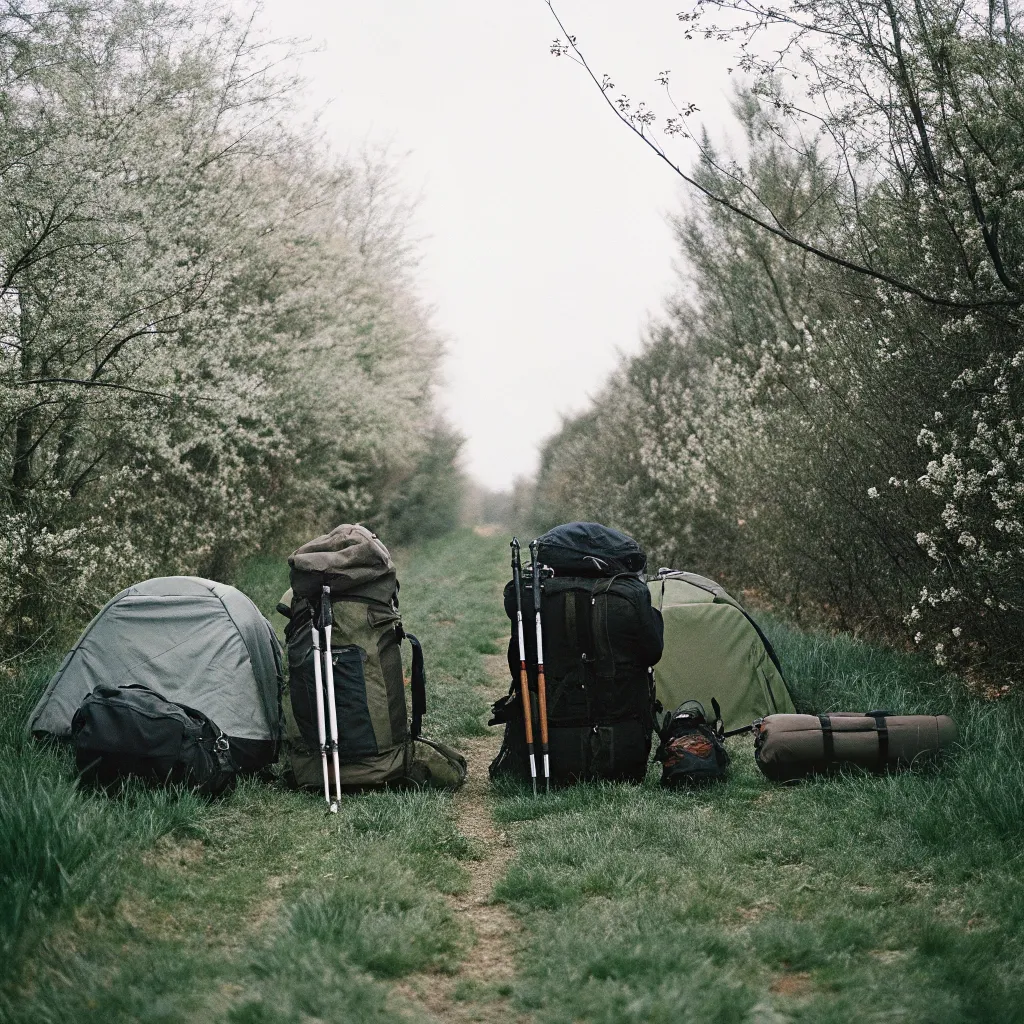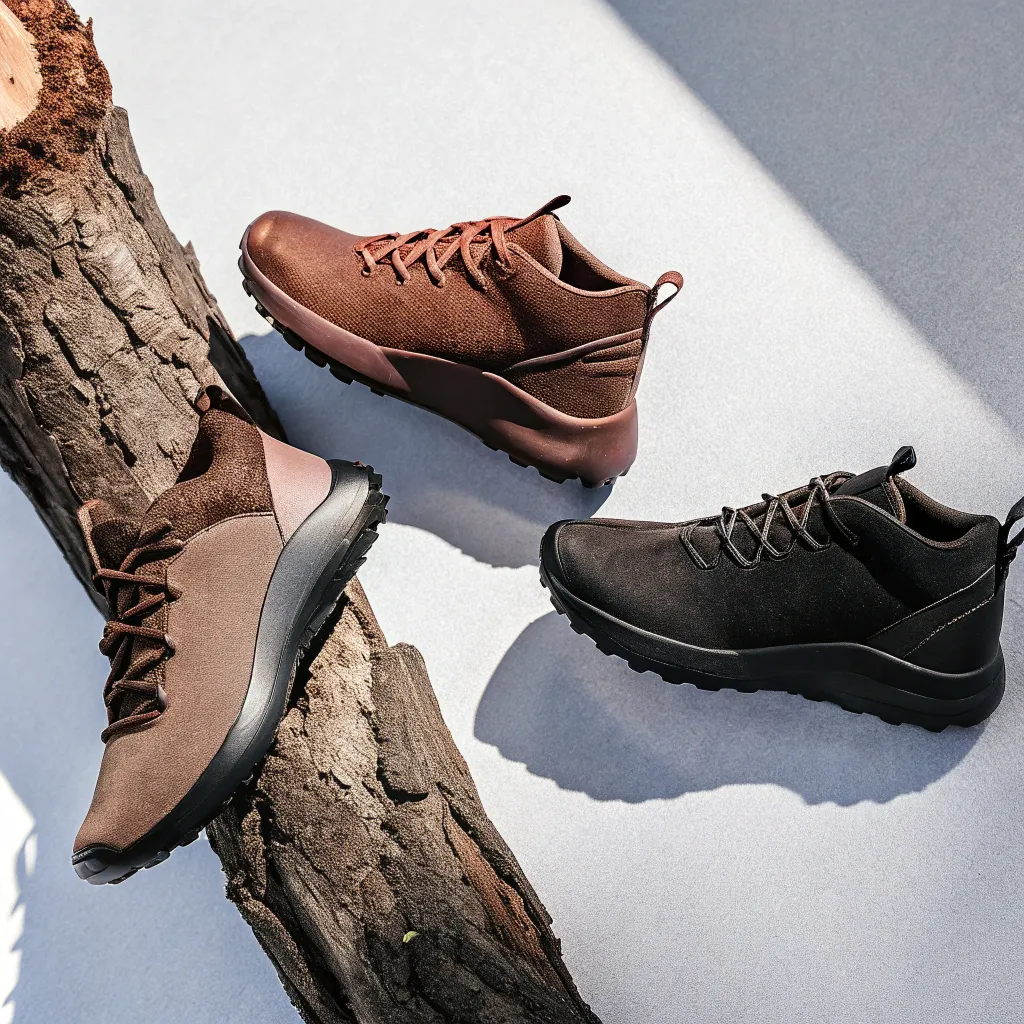Spring hiking brings its own unique challenges – unpredictable weather, muddy trails, and temperature swings that can leave you sweating one minute and shivering the next. I've spent the last few weeks testing the latest gear on trails across varying conditions, and I'm ready to share what's actually working this season and what new innovations are worth your attention.
Rain Protection: The Eternal Quest for "Actually Waterproof"
Anyone who's hiked through a spring shower knows the disappointment of a rain jacket that surrenders to persistent precipitation. The term "waterproof" often feels more like a suggestion than a guarantee.
Recently, I took three newer jackets out during some particularly wet conditions. The Outdoor Research Foray 2 consistently outperformed more expensive options thanks to its innovative side zips that provide ventilation without compromising protection. I noticed several hikers on Reddit echoing this sentiment, with one user commenting they "gave up on expensive heavy jackets" after discovering the Foray's effectiveness in real conditions.
The Burton Rain Suit deserves mention too – originally known for snowboarding gear, their crossover into hiking rain protection brings that same durability to spring conditions. It's become particularly popular among parents hiking with toddlers, as noted by The Rocky Mountain Mom blog, which praised its "protection of our favorite snowsuit, without the added bulk."

What hasn't worked? Those ultralight packable jackets under 8oz typically can't handle sustained rainfall beyond a light drizzle. They're fine for emergency protection but don't trust them as your primary defense during serious spring storms.
New Technology Worth Noting
The emerging trend this season is environmentally-friendly waterproofing treatments that avoid PFCs (perfluorinated chemicals). Brands like Patagonia and REI Co-op have introduced jackets using these alternative treatments that are surprisingly effective while being better for the planet. The performance gap between these and traditional treatments has narrowed significantly this year.
Footwear: Dealing with Spring's Muddy Reality
Spring trails often resemble mud baths more than hiking paths. This season has seen some interesting developments in traction technology and quick-drying materials.
The Salomon Cross Hike 2 has been my go-to this spring. Its aggressive lugs handled mud exceptionally well, while the quick-drying mesh upper meant my feet weren't soaked all day after inevitable puddle missteps. The drainage channels actually work as advertised – something I can't say for many competitors.

For those wondering if regular sneakers work for spring hiking (as one Reddit user recently asked), the short answer is: it depends on the trail. For groomed paths with minimal elevation change, they're fine. But anything with mud, rocks, or significant incline demands proper hiking footwear with adequate traction and support.
Layering Systems: The Key to Spring Comfort
Spring's temperature fluctuations make layering essential, but carrying bulky extra clothing is frustrating. This season has seen some clever innovations in packable mid-layers.
The Patagonia Nano Air remains my favorite versatile mid-layer – breathable enough during exertion but warm when stopped. What's new is their recycled insulation that performs identically to previous versions while reducing environmental impact.
For base layers, merino wool still reigns supreme for multi-day hikes. However, for day hikes, I've found the new generation of synthetic/natural fiber blends (like those from Smartwool's Intraknit series) offer better moisture management while hiking at varying intensities.
How Much Gear Do You Actually Need?
I frequently see hikers carrying way too much – or dangerously too little. As one experienced backpacker noted on I Heart Pacific Northwest, "What I pack depends on many variables, including the weather, trail conditions, hiking distance, etc."
This is especially true in spring. Here's my streamlined approach:
- One reliable rain shell (not just water-resistant)
- Quick-drying hiking pants (preferably convertible for temperature changes)
- Moisture-wicking base layer
- Lightweight insulating mid-layer
- Proper hiking footwear with good traction
- Small pack with hydration capacity
Notice what's missing? Excessive changes of clothes, overly specialized gear, and "just in case" items that rarely see use. For most day hikes, simplicity works better than overpreparation.
What About Hiking Clothes vs. Regular Clothes?
This question appears regularly on hiking forums. Recently on Reddit, someone asked if "regular clothing, like a t-shirt, shorts, and sneakers" would suffice for hiking.
The answer isn't straightforward. Cotton t-shirts are problematic because they hold moisture against your skin when wet (from rain or sweat), potentially leading to discomfort or even hypothermia in cooler conditions. Regular shorts might chafe during longer hikes.
That said, you don't need expensive "hiking-specific" clothing for every situation. Many athletic clothes designed for running or gym workouts perform adequately on trails. The key differences in hiking-specific clothing are typically:
- More durable fabrics that resist abrasion from brush and rocks
- Strategic pocket placement accessible while wearing a backpack
- Features like articulated knees and gusseted crotches for movement
- UPF sun protection built into the fabric
For casual, shorter hikes in good weather, regular athletic wear is usually fine. For longer, more demanding hikes or unpredictable conditions, purpose-built hiking clothing offers meaningful advantages.
Sun Protection: Often Overlooked in Spring
With cooler temperatures, many hikers forget about sun protection during spring outings. This is a mistake, especially at higher elevations where UV exposure increases significantly.
Are "sun/safari hats necessary" as one Reddit user asked? While not strictly necessary, they provide valuable protection not just for your face but also your neck and ears – areas particularly vulnerable to sunburn. The Outdoor Research Swift Cap has been my favorite this season – lightweight, packable, and quick-drying when caught in unexpected showers.
Sunglasses with proper UV protection are non-negotiable for alpine hiking where snow reflection can cause eye damage. The Native Eyewear Wells model offers excellent coverage without the premium price of some bigger brands.
Finding Gear That Actually Works
As the creator of HikingGuy.com notes, much of the gear marketed to hikers comes with sponsored promotion that doesn't necessarily reflect real-world performance. Their unsponsored gear list highlights an important truth: the best gear isn't always the most expensive or the most heavily advertised.
I've found some of my most reliable pieces came from unexpected sources or were previous-generation models purchased at clearance prices. Performance in actual conditions matters far more than marketing claims or trending status.
Before investing in new spring hiking gear, consider:
- Reading reviews from actual hikers (not just professional gear testers)
- Testing in-store by wearing a loaded pack while trying on items
- Starting with versatile pieces that work across multiple conditions
- Prioritizing function over fashion or brand names
The best hiking gear is ultimately the stuff you don't have to think about while on trail – it just works reliably in the background while you enjoy the experience.
What spring hiking gear questions do you still have? Drop them in the comments, and I'll share what I've learned from my trail testing this season.






